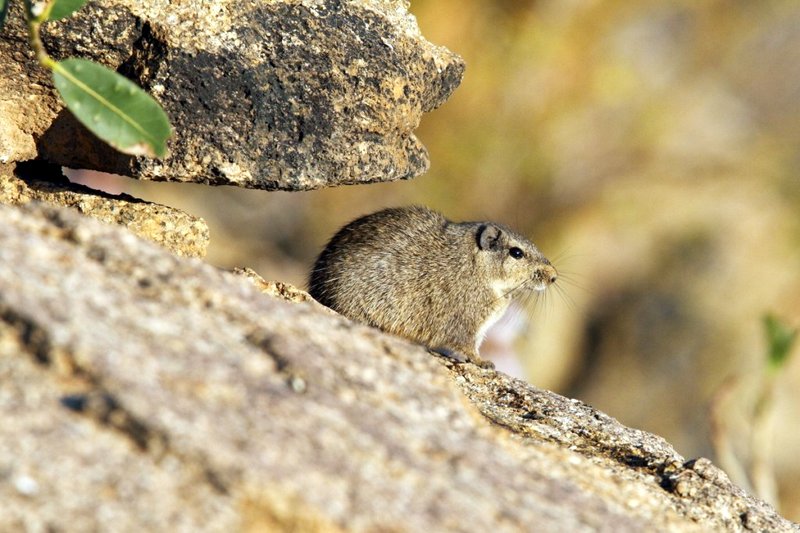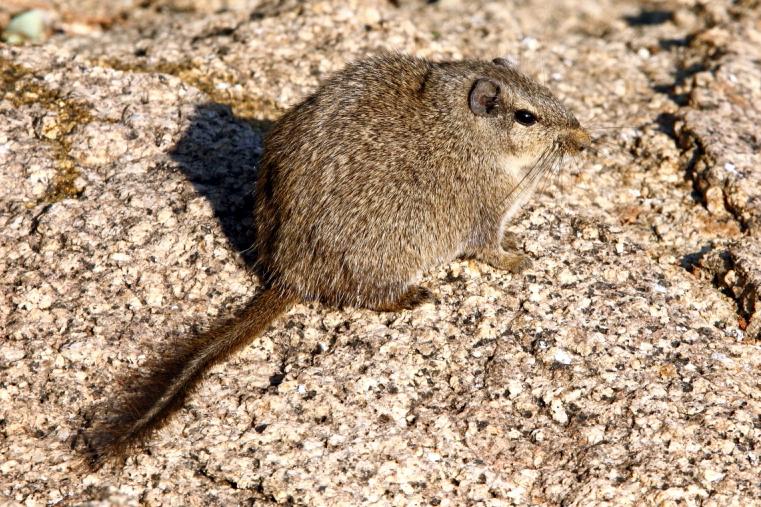
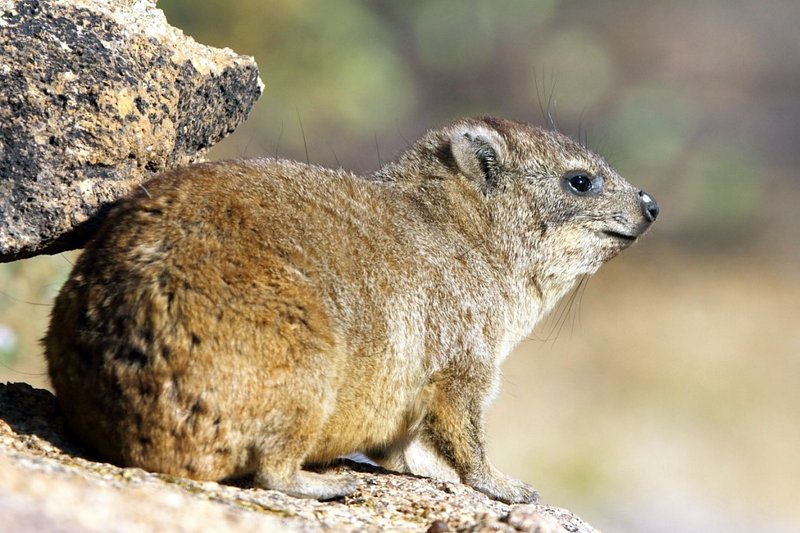
Dassie Rats are well known for their ability to wedge themselves into extremely narrow crevasses from which they are almost impossible to extract. They have evolved narrow, flattened skulls and very flexible ribs to master this talent. Female Dassie Rats even have teats on the sides of their torso, rather than underneath, so that their young can nurse in the very confined and narrow spaces in which they den. Dassie Rats usually give birth to a pair of offspring and only once per annum, a particularly slow reproductive rate for a rodent. As their gestation period is an extremely protracted period of three months, the young are well developed when born; fully furred, with eyes and ears open and ready to run! These young are known as ‘kittens, nestlings, pinkies or pups’, whereas female Dassie Rats are termed ‘does’ and males ‘buck’. They feed predominantly on soft vegetable matter, especially grass stems and leaves and flowers of the daisy family, but will also take fruit, seeds and insects when available. They have been observed climbing trees to pluck leaves and are also coprophagous, meaning they eat feces, sometimes even their own. Dassie Rats obtain all their moisture from their diet and are thus able to survive without drinking, another essential characteristic in their arid environment.
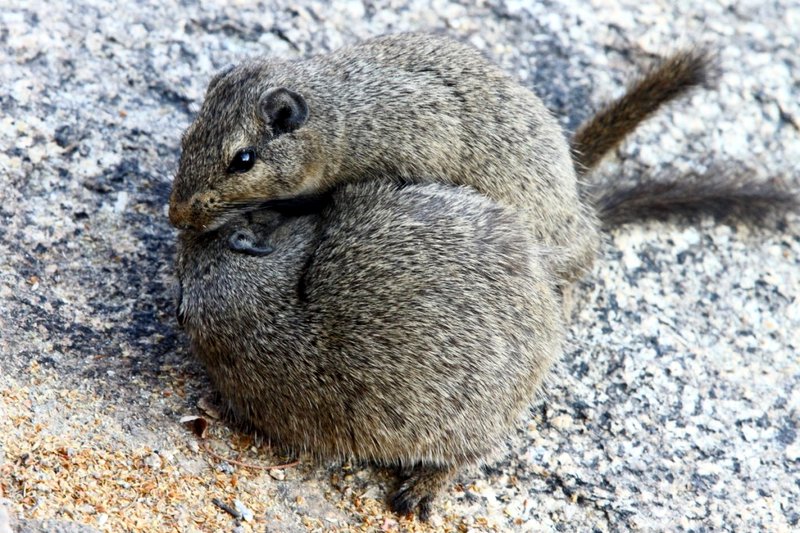
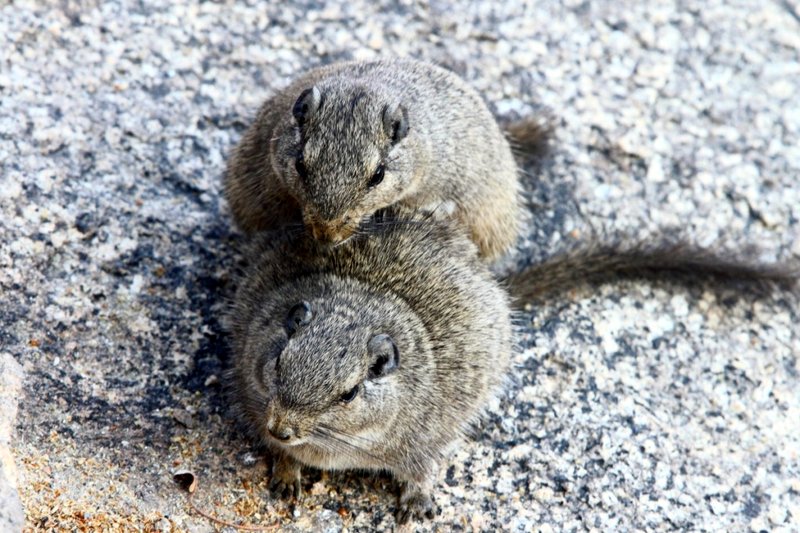
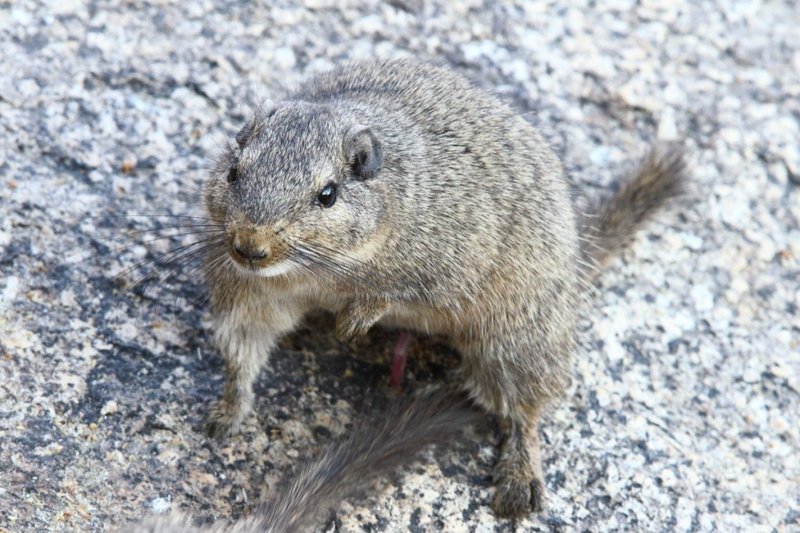
Other physical features of this species include unusually large eyes, a prominent yellowish nose, bare feet with pads and short, silky fur (however their bellies are naked) of a grey, brown or buff colouration that is perfect camouflage in their rocky environments. As with other rodents, their front teeth continue growing throughout their lives, however their cheek teeth are not evergrowing. They groom themselves with their hind claws which have evolved stiff hairs that are believed to act like combs. Adults weigh from 6 to 11 ounces (170 to 300 grams) and reach a length of 5.5 to 8.3 inches (14 to 21 cm), with their tails adding an additional 6.69 inches (17 cm).
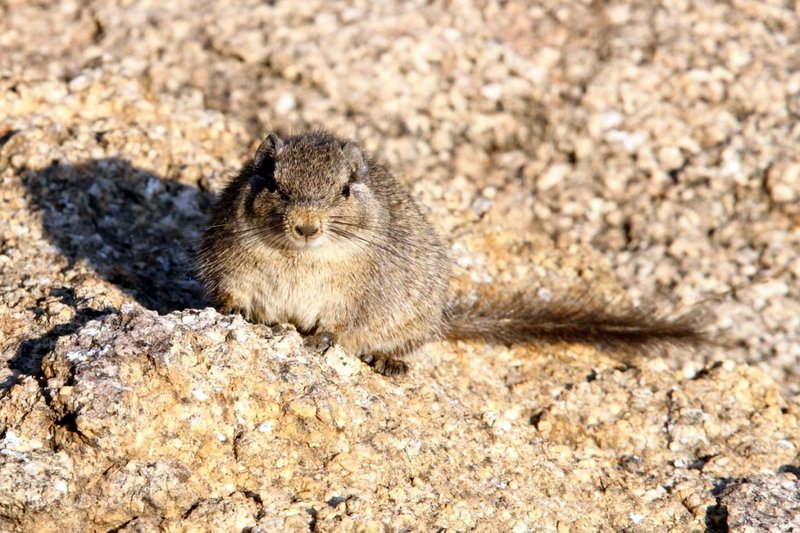
Dassie Rats are colonial, living in small family groups of several adults and young (maximum recorded group size is 22 individuals). They have numerous predators including snakes, mongoose, jackal and avian raptors. Group members give off a distinctive whining whistle as a danger warning. Hyraxes don’t predate on Dassie Rats but do chase them away from food sources. They are diurnal and most active at dawn and dusk, and enjoy basking in early and late sunlight. This solar basking also conserves energy, a useful trait due to their slow metabolic rates and low nutrient diet. Their favourite basking spots are close to their shelters and are often stained yellow from their urine. Dassie Rats are very docile yet playful animals. Reliable sites where I have encountered these lovely creatures include the Erongo Mountains, Spitskoppe, Twyfelfontein and Spreetshoogte Pass, all in Namibia.
